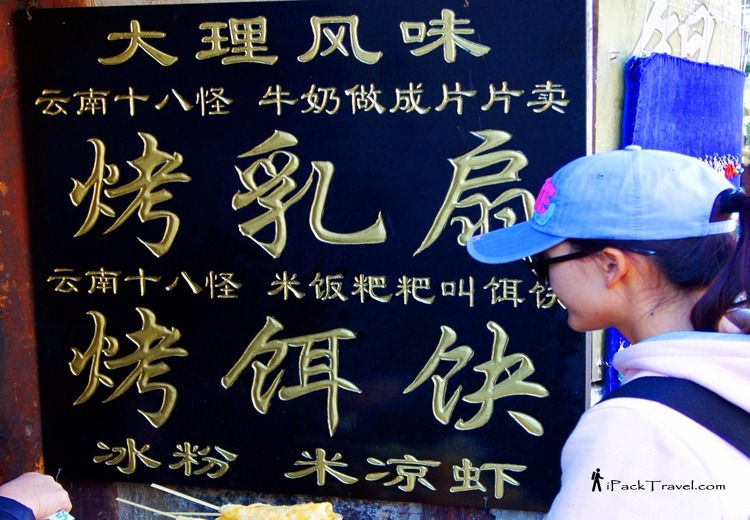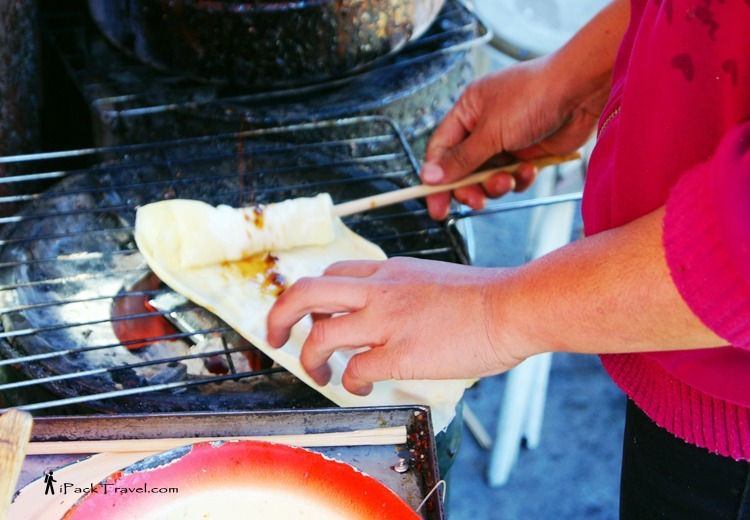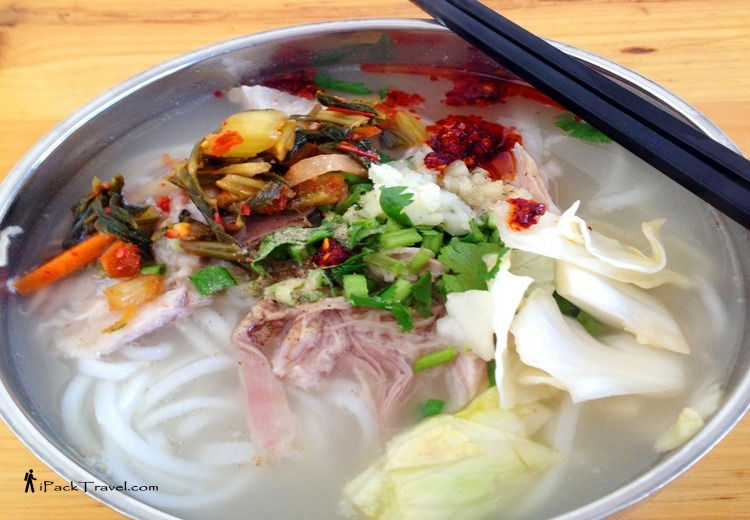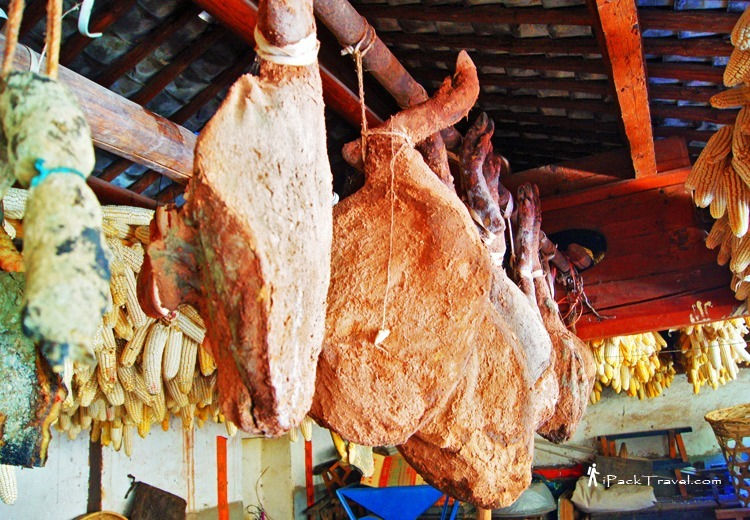Yunnan Eats: Traditional Specialty Food Trail in Yunnan, China
- Rick

- Jan 8, 2018
- 5 min read
Updated: Dec 6, 2025
While travelling in Yunnan for more than a month, I tried quite a number of food stuffs there. Among the long list of local food that I came across, I would like to share the more traditional ones by the minority people of Yunnan. Travellers may have a lot of eating choices, but don't miss what the locals eat.
Interestingly, Yunnan has 18 so-called "weird" things, known as Yunnan's 18 Oddities (云南十八怪), that are often used as gimmicks to attract visitors. Among them are "oddities" about Yunnan's traditional food — and it is fun to try those food and satisfy the curiosity.
1. Cross-Bridge Vermicelli (过桥米线)
Guoqiao mixian (or cross-bridge vermicelli) is a famous traditional noodle dish of Yunnan that is well-known far and wide. One of Yunnan's 18 Oddities is "过桥米线人人爱", which means "everyone loves cross-bridge vermicelli". So, when in Yunnan, it is a must to at least try the original version and satisfy the curiosity of why everyone loves it. #Yunnan18Weird
The ingredients for the noodle are usually served separately from the thick rice noodle. After adding hot chicken broth to the noodle for a little while, all the ingredients are then emptied into the hot noodle soup in the order from raw (quail egg, vegetables, etc) to cooked (slices of boiled chicken). And the noodle dish is ready.

In some restaurants, customers can order guoqiao vermicelli with more luxurious ingredients at higher prices. But for travellers trying it for the first time, go for the standard or original version.
Where I tried? Kunming City. #Kunming
2. Grilled Milk Cheese (烤乳扇)
In Yunnan's 18 Oddities, two of them are about Dali's specialty snacks: grilled rushan and erkuai (see 3). #Yunnan18Weird

Grilled rushan (烤乳扇) is cow's milk cheese that are traditionally made by Bai minority people (大理白族). The mainly-milk ingredient is made into flat pieces and dried. They are usually grilled and rolled up in a stick before serving.

That's the reason why it is called "牛奶做成片片卖" meaning "milk are sold in flat pieces". Well, whoever found it weird did not know that cheese are sold in flat pieces in the western world — but not grilled. The milk-snack tastes like grilled cheese, of course.

Where I tried? Dali Ancient City. #Dali
3. BaBa (粑粑)
Baba is a type of rice cake (米糕) in the southern provinces of China. It is usually made into thick, flat, round bread that can be served plain or stuffed with fillings.
In Dali (大理), erkuai is the Bai minority specialty. Most minority tribes in Yunnan and Guangxi called them "baba", but it is called "erkuai" (饵块) in Dali due to its shape that looks like an ear — which is the other weird specialty "米饭粑粑叫饵块". #Yunnan18Weird
The soft rice cake is used to wrap around meat and veggies before eating — like an open-ended spring roll but erkuai is much thicker. The bread is usually white in colour and smooth. Other ways of eating include grilling the rice cake before stuffing with ingredients or stir-fried slices of it with vegetables and spices and served as a dish.
I don't have a photo for erkuai but I tried a different eating style called "ersi" (see 4.).
In Dali Xizhou Town (喜洲镇), just 20Km north of Dali Ancient City, the traditional local specialty is called "Xizhou baba" (喜洲粑粑 or 破酥粑粑). The dough is being baked into bread which is crispy on the outside but soft inside. There are salty and sweet versions. One piece of Xizhou baba is big enough to make a meal.

Where I tried it? Dali Ancient City. #Dali
In Lijiang (丽江), Lijiang baba (丽江粑粑) is a specialty of the Naxi minority people (纳西族). The flat bread is usually filled with sweet or other savory fillings before being baked until flaky or crispy.

Where I tried it? Shuhe Ancient Town, Lijiang. #Lijiang
4. Weishan ErSi (巍山粑肉饵丝)
Weishan ersi (饵丝) is a famous specialty in Weishan County (巍山彝族回族自治县), also in Dali. It is an eating variant of Dali's erkuai by cutting the soft bread into shreds, called ersi or shredded rice cake, and cook it like a noodle dish with hot soup. The intended meat and veggies are also shredded and added as toppings with pickled vegetables and chilli.

Where I tried it? Dali Ancient City.
4. Dali Bai-Minority LiangFen (大理白族凉粉)
Liangfen is a generic term meaning "cold noodle". The Bai minority people will use almost any type of noodle that is made from rice or flour in the cold dish. The cold noodle is then topped with chilli, minced peanuts, or other ingredients and served.
Consumers usually have the choice of noodle type and also the condiments. However, chilli is the original taste.

Where I tried this thick noodle variant with minced meat? Nuodeng Ancient Village (诺邓古村), Dali. #Nuodeng
There is also a variant using "mung bean cake" (豆粉) instead of noodle.

Where I tried this? Shaxi Ancient Town (沙溪古镇), Dali. #Shaxi
5. Nuodeng Ham (诺邓火腿)
Mention Nuodeng ham to any Chinese and they will tell you it's the best ham in China. It was also documented in a Chinese television series called "A Bite of China", which became a popular reference for gourmets after its screening in 2012.
Nuodeng hams are made with specially-selected hams and seasoned with Nuodeng's own high-grade rock salt. The hams are then preserved for a whole year.
See its making process:

When travelling in Dali or even to Nuodeng Ancient Village, trying a dish with Nuodeng ham is a chance not to be missed. Almost any guest houses and food outlets in Nuodeng can prepare dishes with their proud hams.

Where I tried it? None other than Nuodeng Ancient Village. #Nuodeng
6. Qingke Bread (青稞饼)
Shangri-La, in Diqing Tibetan Autonomous Prefecture (迪庆), is a Tibetan-majority county in Yunnan. For foreign travellers, this is the closest one can get near to Tibet without travel permits and in organised tours.
Qingke (青稞), or highland barley, is cultivated in the Tibetan Plateau and is traditionally used to make alcohol (see 7.). Qingke is also a main staple to Tibetans and they will use it to make noodle, bread and cakes.
In Shangri-la, the qingke bread is oven-baked until crispy and carries a faint sweetness. It's available on menus in most Tibetan restaurants.

Where I tried it? Dukezong Ancient City, Shangri-La. #Dukezong
7. Qingke Wine (青稞酒)
Another specialty in Shangri-La, or any Tibetan community in Sichuan and Tibet, will be the Tibetan's special brew — qingke wine, made from highland barley also. It is worth to try a small cup especially in the cold winter season.

Where I tried it? Feilai Temple, Deqen. #MeiliSnowMountain
My journey in Yunnan:



Comments